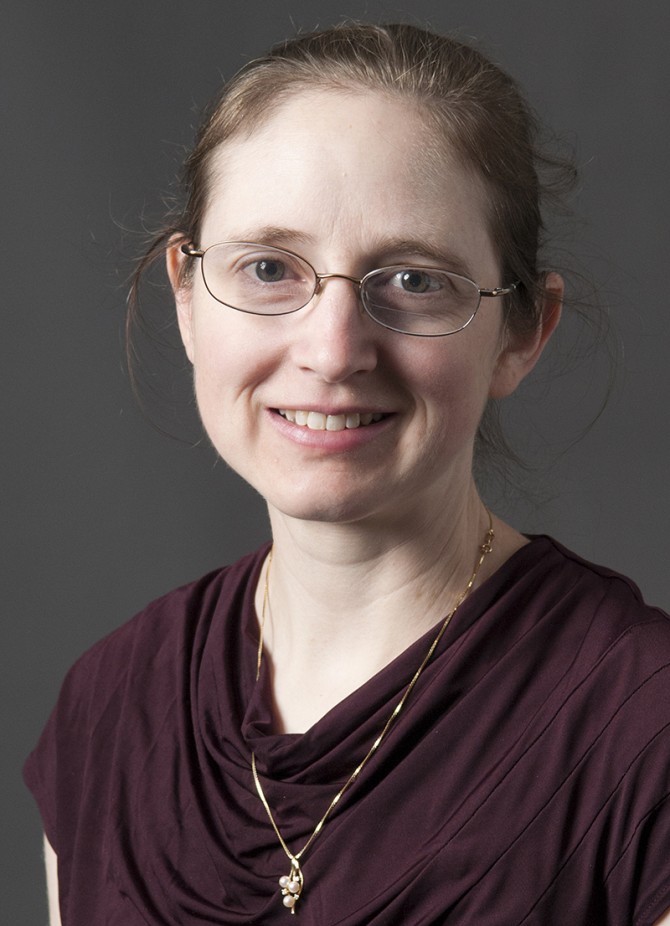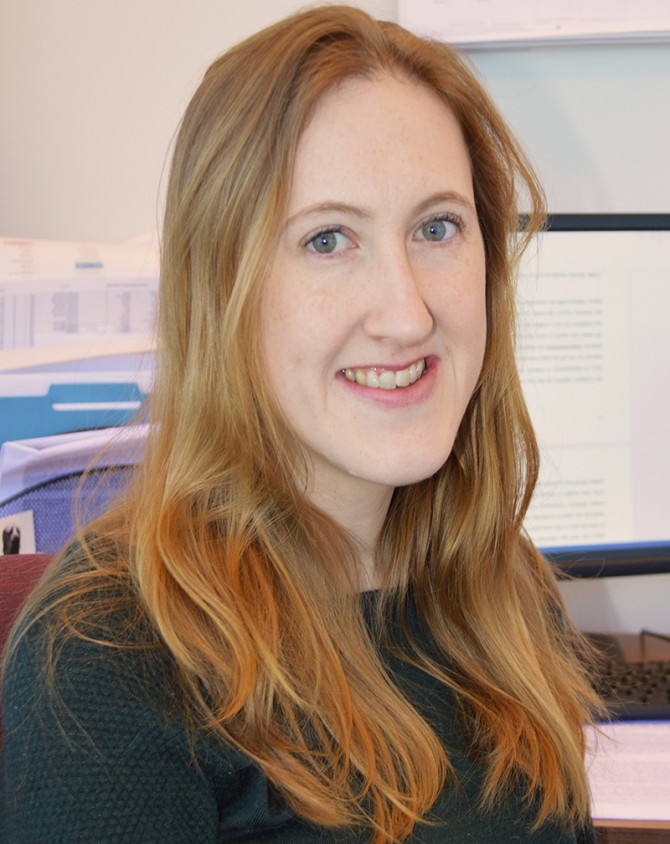Schwartz awards fund research in organ size, diabetes
By Krishna Ramanujan
Two female life scientists, a plant biologist and a biomedical researcher, have each received a 2019 Schwartz Research Fund for Women in the Life Sciences award.
Contributed by Joan Poyner Schwartz ’65 and Ronald H. Schwartz ’65, the award will give Adrienne Roeder, associate professor in the Weill Institute for Cell and Molecular Biology and the School of Integrative Plant Science, Section of Plant Biology, and Bethany Cummings, assistant professor of biomedical sciences, $15,000 apiece to pursue bold, innovative research.
“This is the fourth year that the Schwartzes have supported pioneering research in the life sciences that has opened up new lines of inquiry and enabled some of the past winners to obtain data that led to larger grants,” said Yael Levitte, associate vice provost for faculty development and diversity. “We are very grateful for their continued support of female scientists’ careers at Cornell.”
The Schwartzes were ardent supporters of female researchers during their long careers at the National Institutes of Health; in retirement they have found a rewarding means of sustaining that commitment at Cornell.
Roeder will seek to answer a question that has stumped biologists: how do organs sense their size so they know to grow to the right dimensions? Proper organ size is key to proper functioning; defects in mechanisms that control organ size can lead to hypertrophy (enlarged organs), degenerative diseases and cancer. In agriculture, breeders search for ways to breed smaller plants with bigger fruits and grains.
Roeder’s aim is to take a synthetic-biology approach to create an organ size sensor from scratch, using biological components such as genes, reporters and micro-RNAs, but not in their normal context within the plant. “I want to take a step back from the actual biology and ask, if I wanted to sense organ size, how would I do that?” Roeder said.
Kate Harline, a graduate student in Roeder’s lab, is working on a size sensor to put in plants and test how well it works. The award funds will be used for her to travel to visit computer modeling expert Arezki Boudaoud at the École Normale Supérieure de Lyon, France, and develop a computational model to run tests to improve the organ sensor.
If the preliminary work is successful, Roeder hopes to apply for a National Science Foundation grant to expand the project. Roeder hopes their sensor design helps them identify such natural organ sensors in plants.
“The award is a great way to take on this next new challenge, which is a bit risky but has huge potential payoffs in the future,” Roeder said.
Cummings will use her grant to conduct pilot studies for a new strategy to treat Type 2 diabetes. After bariatric surgery – gut surgeries with the goal of weight loss – patients often experience remission of Type 2 diabetes. Cummings has long been interested in figuring out what causes this remarkable effect of surgery and has focused her studies on pancreatic islets, regions of the pancreas where insulin is made by beta cells and another hormone, glucagon, is made by alpha cells. While insulin decreases blood glucose, glucagon increases it and is a major driver of diabetes.
“Glucagon is a highly promising therapeutic focus, but we have had issues figuring out how to target it,” Cummings said.
Cummings and colleagues found that following bariatric surgery, alpha cells in the islet can be induced to make a hormone called GLP-1 instead of glucagon, as both are derived from the same precursor. GLP-1 helps treat diabetes as it leads to improved beta cell function and growth. Normally, beta cells die off in diabetic patients.
“We found a pathway that can shift the alpha cell from causing diabetes to treating diabetes; we want to start breaking down that pathway,” Cummings said.
The Schwartz award funds will be used to validate a new method for analyzing islet biology. Marlena Holter, a DVM/Ph.D. student in Cummings’ lab, is working with Cornell geneticist Charles Danko and postdoctoral associate Mridusmita Saikiatouse to use their newly developed single-cell RNA sequencing technique in human islets to understand pathways and products produced by each cell type in the islet. This will help Cummings and colleagues identify candidate targets for future drug development, work that could pave the way for future larger grants.
In addition, three other researchers each received a $1,500 travel grant to support conference travel for graduate students in their respective labs: Pamela Chang, assistant professor of microbiology and immunology; Lara Estroff, associate professor of materials science and engineering; and Nina Overgaard Therkildsen, assistant professor of natural resources.
Media Contact
Get Cornell news delivered right to your inbox.
Subscribe


